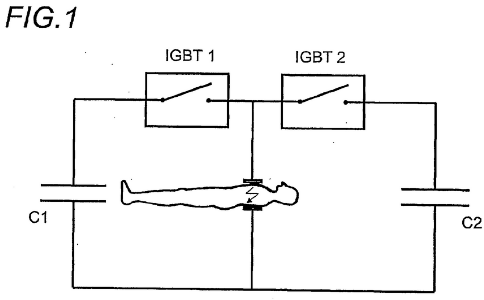This chapter deals with the question of whether a tangible effect is a requirement for patentability. The information is based on the Enlarged Board of Appeal decision G1/19, points 100 to 101.
Pulse sequences could be likened to control signals having potential further technical effects when put to their intended use
In support of the technical nature of calculated (technical) data, it was argued by the President of the EPO in the case G1/19 that the case law of the boards of appeal does not require a “tangible effect” for an invention to be patentable. The representatives of the President of the EPO referred in particular to T 533/09. This decision held claims to a defibrillation pulse sequence (see patent 11) to be allowable.

Defibrillation pulses are electric shocks delivered by a defibrillation device to a patient (see paragraph [0069] and Fig. 1 above of said patent). In the context of Article 57 EPC (industrial applicability), the board in T 533/09 held that the notion of a patentable invention was not linked to a “caractère tangible, au sens de matériel” (Reasons, point 7.2). Referring to the travaux préparatoires, the board found that the EPC did not limit patentability to certain categories of inventions (e.g. products and processes).
The decision emphasised the difference from U.S. law, which, unlike the EPC, limited patentable inventions to “any new and useful process, machine, manufacture, or composition of matter” under 35 U.S.C. § 101 (Reasons, point 7.2). Even though T 533/09 was not limited to computer-implemented inventions, the claimed pulse sequences could be likened to control signals having potential further technical effects when put to their intended use (see chapter 9 “Potential technical effect”, in particular with respect to T 163/85 – colour television signal).
Tangible effect is not a requirement under the EPC
Many cases referring to “tangible” effects use their absence as an argument against patentability (see, as a recent example, T 215/13, Reasons, points 5 and 6 – no tangible technical problem solved). However, the Enlarged Board fully supports the view expressed in T 533/09 (Reasons, point 7.2) that a tangible effect is not a requirement under the EPC.
Moreover, it is unclear to what extent the notions of “tangible effect” and “further technical effect” overlap. A criterion based on tangibility – in addition to the requirement of technicality – thus cannot contribute to a more precise delimitation of patentable inventions.
